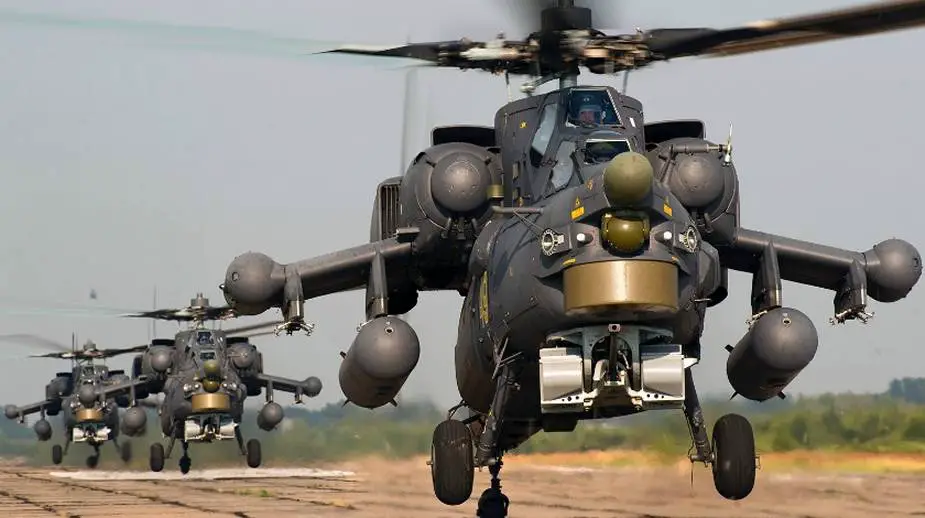Breaking news
Mi-28NM attack helicopter can fire new weapons and interact with drones – Part 2.
The plan to upgrade Mi28N/NE and Mi-28UB to the level of Mi-28NM has been designed since 2015. It was agreed with the military command and approved by a deputy Defense minister.
Follow Air Recognition on Google News at this link

Mil Mi-28NM (Picture source: thaimilitaryandasianregion.wordpress.com)
The plan stipulates the upgrade of helicopters during capital overhaul and includes the following guidelines: double controls, complete onboard defense, an upgraded optical-electronic sight, new-generation onboard radar, expanded range of munitions with light-guided missiles, bombs, unguided new-generation missiles, interface with drones and light missiles, a high-speed data transmission terminal for group interaction in real-time, netcentric control of reconnaissance-combat actions in a jam-resistant regime, and other technical solutions.
Despite major borrowing of technical and software solutions obtained in Mi-28NM design, the upgraded Mi-28N/NE does not have the effectiveness of Mi-28NM. However, it has been calculated that the modernization of Mi-28N and Mi-28UB is economically feasible for the strengthening of army aviation.
Interaction with drones is a prospective guideline to increase the combat effectiveness of helicopters. The technical assignment for Mi-28NM calls for automatic interaction with medium-range Korsar and Forpost-R drones through an automatic command post and directly between the helicopter and drone. Broadband interfacing equipment has been installed for this purpose.
The drone also has similar equipment. It can carry various payloads (reconnaissance equipment, re-transmitter, attack weapons). Automatic interaction between Mi-28NM and a drone will promote the following combat missions: monitoring the assigned area without entering the hostile air defense zone, precision guidance and control of new-generation light guided missiles in real-time, re-transmission of telephone and telecoded messages between interacting helicopters, aircraft and ground controls in the area of hostilities.
Another interaction guideline between Mi-28NM and drones is the inclusion of loitering munitions into the weapons of the helicopter. The rotorcraft enters the assigned area and launches one or several loitering munitions controlled by the helicopter. When hostile targets are detected, the helicopter crew provides guidance and controls the destruction.
The helmet-mounted guidance and indication system of the helicopter provides collimated images of piloting, aiming and navigational information before the pilot’s right eye.
The interaction with onboard equipment and the reception of piloting and navigational information is done by a multiplex information exchange channel. Thermal images and television information from the surveillance station and the sight of the pilot are reflected on high-resolution colored liquid-crystal displays of the pilot and operator.
Shcherbina believes the main difference of Mi-28NM from the US AH-64E Apache Guardian, the European EC665 Tiger, and Chinese Z-10/Z-10K is its multirole designation and a broad range of munitions. Mi-28NM can effectively fight in any weather and fire guided and unguided weapons at various targets. “No foreign helicopter can compare with Mi-28NM by the number of missions and attacked objects,” Shcherbina said.
© Copyright 2021 TASS. All rights reserved. This material may not be published, broadcast, rewritten or redistributed.

























